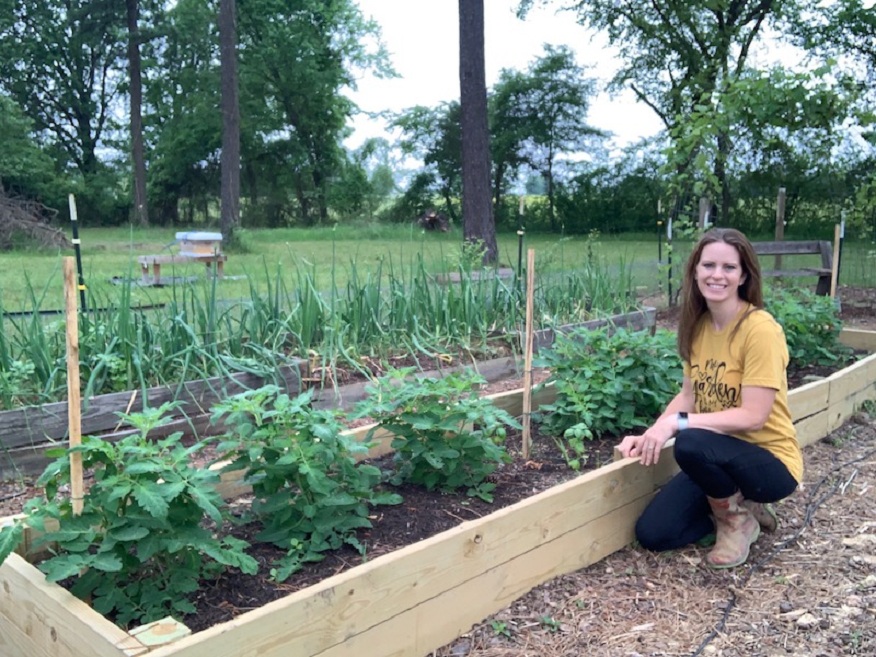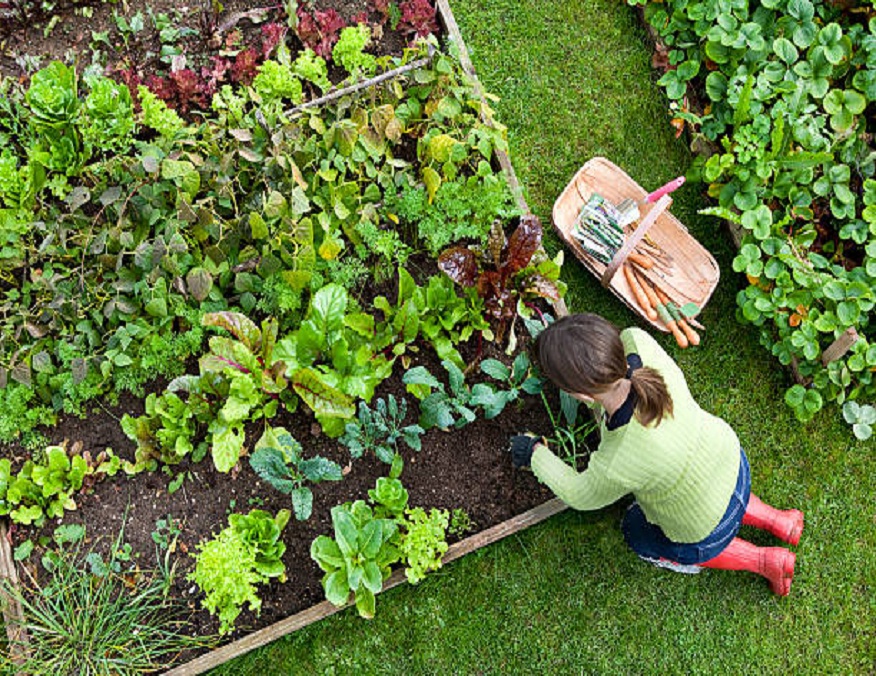Raised beds are extremely popular with gardeners and people who have vegetable gardens. It is also a way for people with reduced mobility to be able to garden. Let’s see why and how to make your raised vegetable garden ?
What is a Raised Bed?
Raised bed is a form of gardening in which the ground is formed into beds, which can be of any length or shape, but are usually about 1 meter wide.
The spacing is such that when the vegetables are fully grown, their leaves almost touch each other, creating a microclimate in which weed growth is suppressed and moisture is retained.
Why should I build a raised garden bed?
Improve the ground
A raised bed allows you to add organic soil amendments and compost to build and improve garden soil.
In a no-till garden, fungal webs and soil organisms release sticky exudates that hold the soil in place. These are not usually present in a new garden bed, which is why the raised bed can be so beneficial. Fungal networks grow over time and hold the soil together (whether in a raised bed or in a dug bed).
Gardening in small spaces
Raised beds are ideal for small spaces where a conventional row garden might be too wild and cumbersome. Raised beds help keep things organized and in control.
Avoid erosion due to a slope
If your garden is built on a slope, containing the beds prevents soil from washing away. Raised vegetable beds can be a great way to contain garden soil.
There are many creative ways to frame vegetable gardens on a slope, but whatever material you use, be sure to build it level.
Avoid contamination
Contaminated soils are a concern in many residential locations. It’s always a good idea to have your soil tested before growing a garden for food. Invest in building deep beds so your crops can have good roots without having to tap into the toxic soil below.
Ergonomic
If physical limitations are a reality for you, then vegetable garden raised beds will mean less bending over. This is useful for people with back pain or people in wheelchairs.
Garden work is easier and more comfortable with less bending and kneeling. Save your knees and back from garden maintenance fatigue and pain!
Better manage weeds
If you deal with a lot of weeds in your garden, then raised vegetable beds can come in handy. First of all, raised ground tends to be loose, so weeds should grow out of it more easily.
You can also prevent weeds from growing in the bed by using leaf mulch. Simply lay cardboard inside the bed before adding soil to smother the weeds. This method does not work with weeds like field bindweed or weeds with an extensive root system, like thistle.
Raised beds prevent grass or weeds from creeping into nearby walkways. This is a challenge in the case of dug beds, which must be edged frequently to keep the grass out.
Reduce soil compaction
Raised vegetable beds will form a barrier to prevent children, pets or barnyard animals from trampling the ground. Raised structures will also allow you to manage your vegetable garden from the outside rather than walking in it. Foot traffic is the surest way to compact the soil, which reduces aeration and harms the soil life that keeps it healthy.
Compaction can also occur during heavy rains, which carry heavy soil particles as water drains from the site. Since water drains effortlessly from a raised vegetable bed, compaction is less of a problem.
Gardening in long winters
Raised beds warm up more quickly in the spring and cool less quickly in the fall, extending the growing season in areas with long winters.
Planning, building and planting a raised garden bed
Raised beds are fairly easy to build, even easier to maintain, and provide a myriad of benefits for your garden! Here’s how to build a raised garden bed, plus some tips on using the right wood and soil.
Choosing the Right Wood for Raised Beds
Treated Wood: Regular pressure-treated wood sold today contains a mixture of chemicals applied to prevent wet soil and weather from rotting. Although pressure-treated wood is certified safe for organic growing, some people have reservations about its use and there are several environmentally friendly alternatives. Avoid using railroad ties, as they can be toxic treated.
Sustainable woods: Woods like cedar and larch are naturally more durable. They contain natural oils that prevent rot and make them much more durable. The flip side is that they cost a lot more, although they will last for many years. (Thicker boards: A 5cm thick larch should last at least a decade, even without treatment.)



